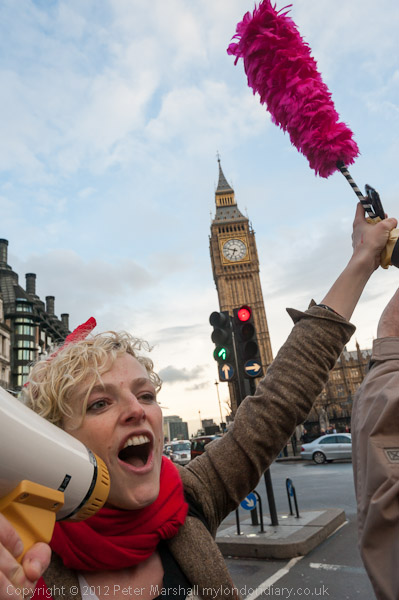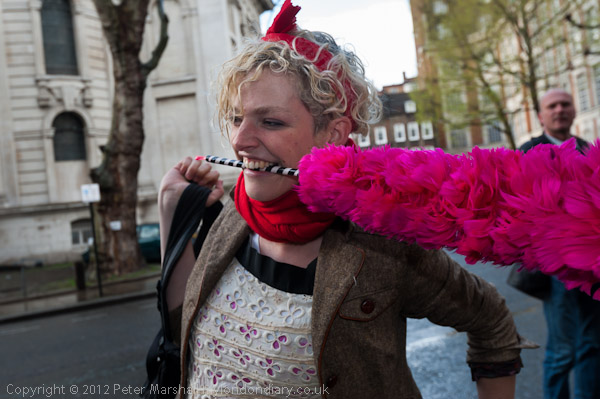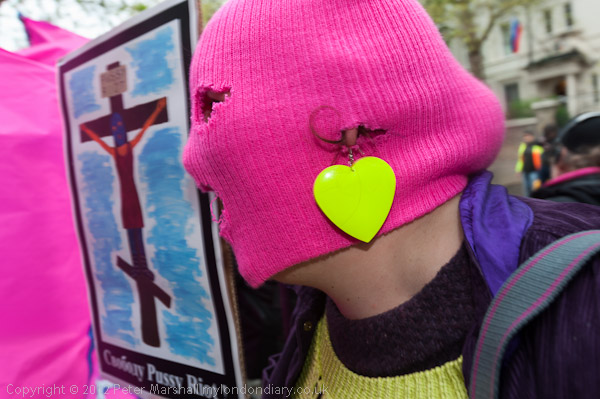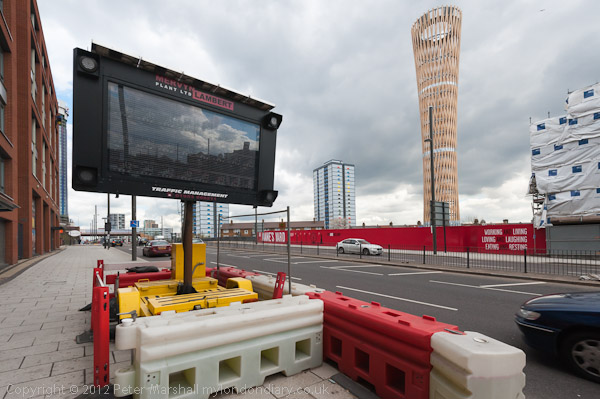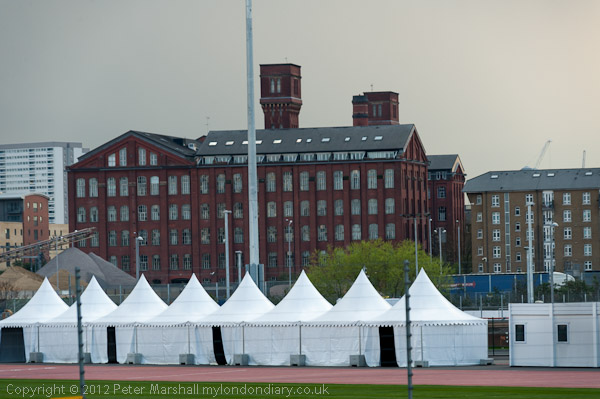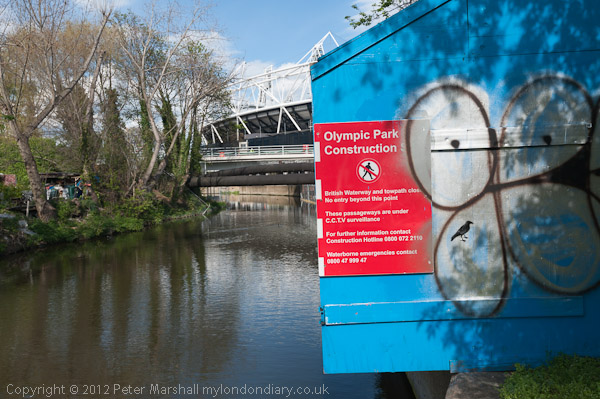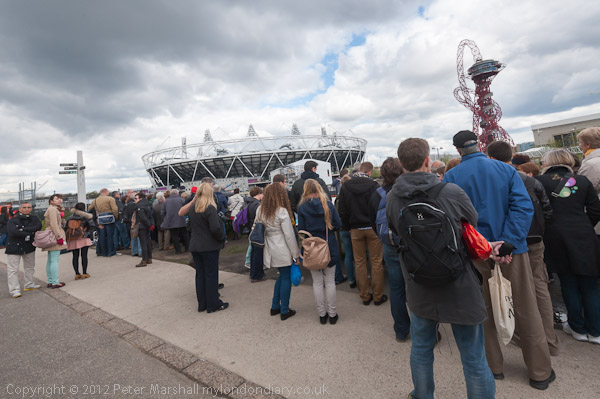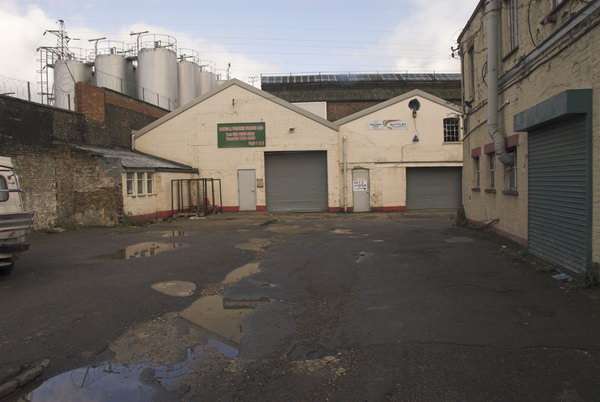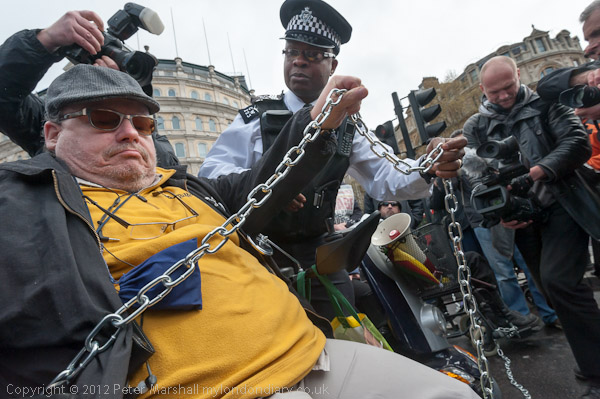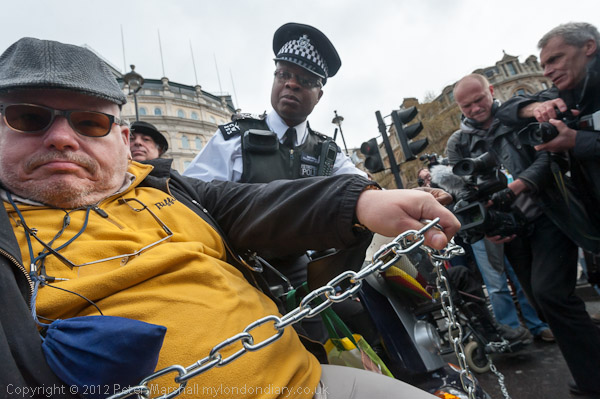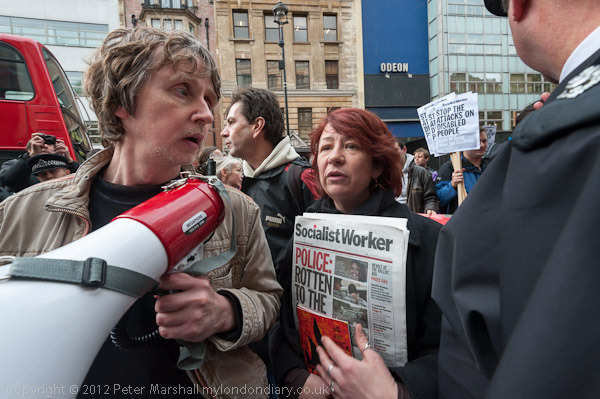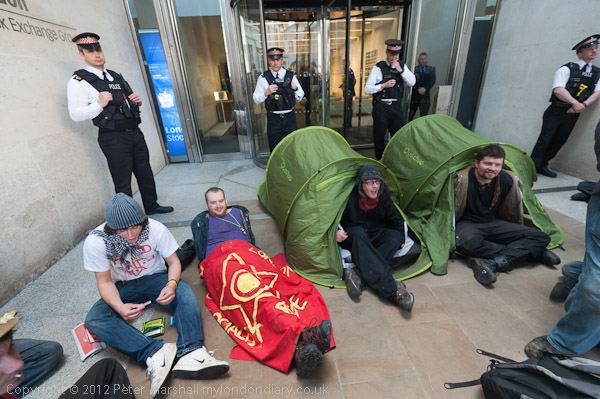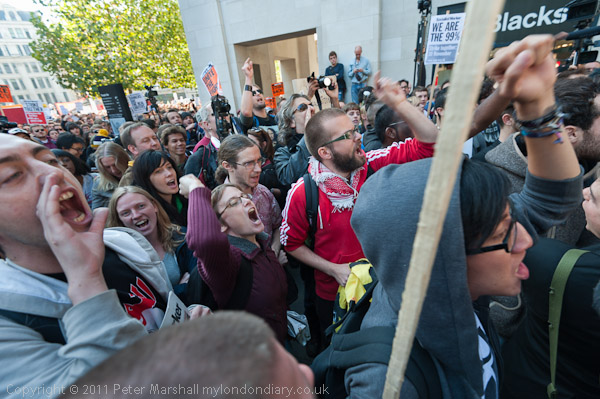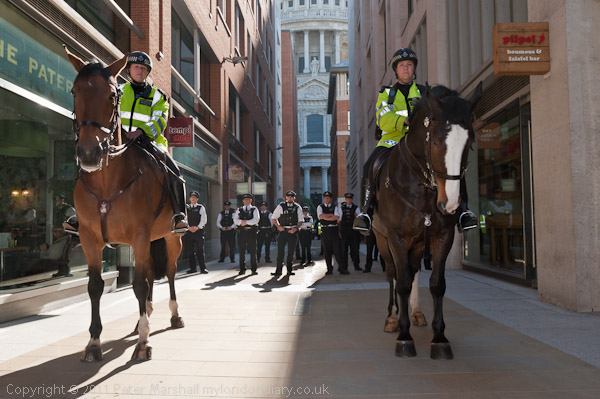It was a gloomy and damp day, the rain varying between the occasional spot and heavy downpour as I rushed from what for me counts as a early morning event – 10.30am at Tower Hill for Workers Memorial Day with speeches and wreath-laying at the statue of the Building Worker there to Park Lane in Mayfair for the Big Ride. Of course 10.30am isn’t really early, and only meant me leaving home around 8.45am, but I’ve long got out of the habit of early rising (and had not got to bed until after 1am.) On weekdays I don’t like to travel in the morning rush hour if I can avoid it, because it costs me two or three times as much for the privilege of often standing in a crowded train for 30 or 40 minutes. But this was a Saturday, so at least I was travelling rather cheaper and got a seat.
I arrived at Park Lane just a few minutes after the time I’d been told people would start gathering at Brook St, to see everyone around there cycling away, and thought I might have missed it. Running with a fairly heavy camera bag isn’t my idea of fun, and I could have done without the 700 yard dash to find where the front of the ride was actually assembling and I was able to take some pictures. The rain wasn’t too heavy, though it did cause some problems, and working as I do most of the time with a very wide-angle means their is no way to stop drops of rain getting on the lens, its effects usually impossible to spot on the small images on the back of the camera, and this made a few images unusable. Sometimes you are lucky and it isn’t in a really critical area of the picture, as in this case:
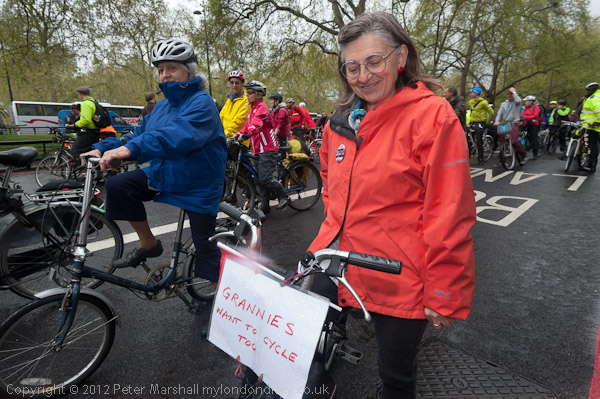
You can clearly see the diffusion it has given on the top left of the sign reading ‘Grannies Want To Cycle Too’ although I’ve reduced the effect considerably in post-processing in Lightroom by darkening the area and increasing contrast and sharpness. You can see it again on the bottom of the flag in this picture:
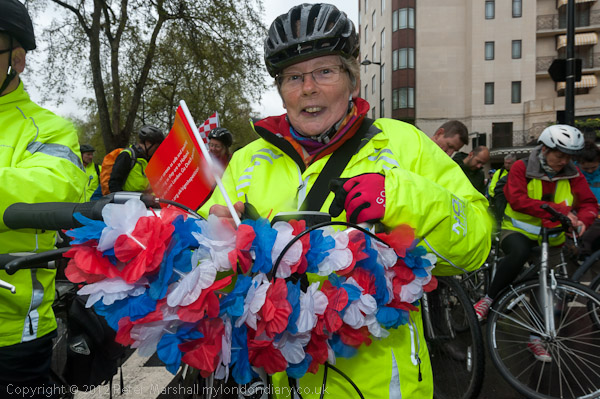
I was also trying hard to remember that 16mm is usually a mistake with bicycle wheels at the edges of the frame, and trying to work more towards the 35mm end of the lens.
Although the SB700 flash unit’s instructions are very clear about not letting it get wet, it seemed to keep working fine, and I needed a little fill from it for most of these pictures of people. I still am not quite used to the various buttons and switches on this unit, and after seeing the results when I got home reached for my black tape. Since I take more than 99% of the pictures on the TTL setting the unit now has a small piece of tape preventing me from shifting it from that position accidentally. It does take a bit of doing without the tape, but I found I had managed it. Similarly the switch which changes from even to standard and centre-weighted coverage is fixed at the even end. It’s easy to peel off the tape should I need to change the setting.
Incidentally I’ve been pleased so far with the SB700, though even on the wide setting I don’t think it has the same evenness of coverage I got with the SB800. But a little fall-off around the edges is often a good thing. Using the built-in ‘wide panel’ or the clip on diffusion dome should give more even coverage for those pictures that need it. Without the wide panel in place on the full-frame camera the flash is reasonably even only for focal lengths of 28mm and above. With it the 17mm indicated on the panel isn’t quite true, but using this or the diffusion dome is generally pretty even, and with the two together, things are excellent. But there is a catch. Using the panel or the dome makes the unit much less efficient and increases the recycling time. So almost all the time I work without either.
It is largely a myth that these things make your flash softer. Neither greatly increases the size of the light source, and diffusion without an increase in size simply reduces the amount of the light emitted that misses the subject – unless there are suitable surfaces around to bounce some of it back. To get a softer effect you need a large diffuser or reflector.
For using as fill I now have the flash usually set at -0.3EV and the two camera bodies also with some negative setting, typically also -0.3 or -0.7EV. Often I seem to want a little less fill with the longer lens on the D300, so it’s convenient to use the flash compensation on the bodies to allow for this. Quite why Nikon hide away what is probably the most important information on using the flash in pages E23-E24 of the manual, after a lot of esoteric stuff on advanced wireless operation is hard to understand.
As usual I was spending almost all of the time between actually taking pictures holding my microfibre cloth over the front of the lens to keep it dry, though occasionally using it to wipe the flash too. Mostly it worked, as you can see in Big Ride for Safe Cycling on My London Diary, where there are some better pictures than in this post.
Continuing on the vaguely tech side of thing, here is a pair of pictures, one take on the D700 at 16mm with its normal rectangular perspective and the other on the D300 with the 10.5mm fisheye (almost impossible to keep raindrop free) and then converted to cylindrical perspective.
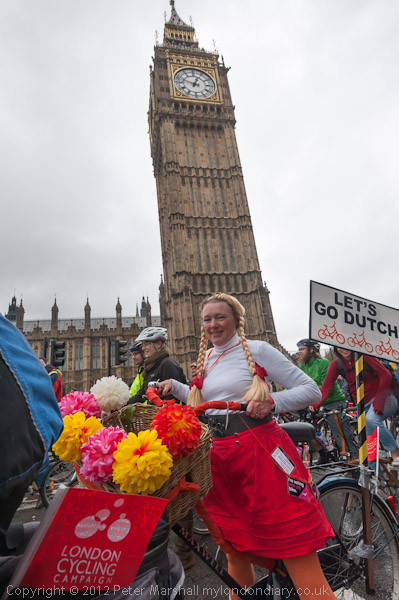
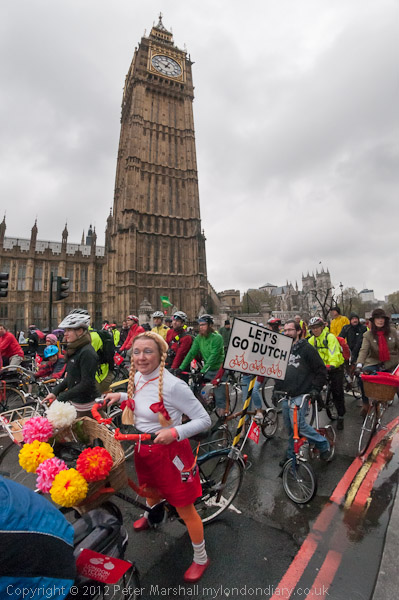
Of course they are from a different viewpoint but give a good idea of the different ways the two depict more or less the same subject.
After then end of the Big Ride (and again I was annoyed to find that while the organisers had said the finish would be near Blackfriars it was actually more or less at Temple, another unnecessary 700 yards I could have done without and which meant me arriving a few minutes too late) I dried out and warmed up in one of my favourite London galleries, the Courtauld Gallery.To be honest I wasn’t that impressed by the current show there, Mondrian || Nicholson In Parallel, though I did feel that while Nicholson’s work looked better for actually seeing the works, Mondrian is actually more impressive in reproduction. But the Courtauld has one of the finest collections anywhere of Impressionist and Post-Impressionist works.
Then, feeling rather better I took a bus to my final event for the day, in Whitehall, opposite Downing St, Support For Palestinian Hunger Strike. By this time the rain had almost stopped too. Again here is a pair of pictures taken with the 10.5mm and 16-35mm from a very similar position which I think demonstrate the uses of both lenses. It was of course a tableau set up for the media, the kind of thing I don’t generally relish.
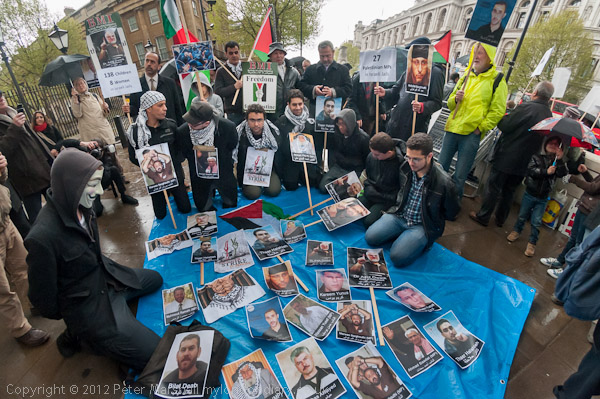
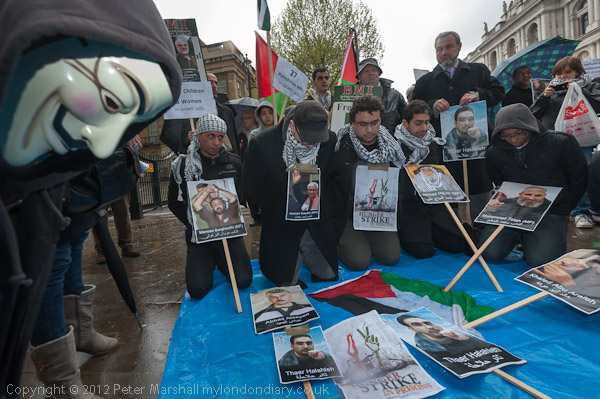
________________________________________________________
My London Diary : Buildings of London : River Lea/Lee Valley : London’s Industrial Heritage
All photographs on this and my other sites, unless otherwise stated are by Peter Marshall and are available for reproduction or can be bought as prints.
To order prints or reproduce images
________________________________________________________






